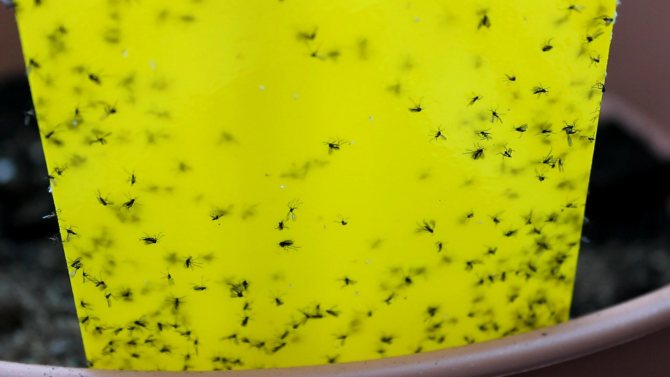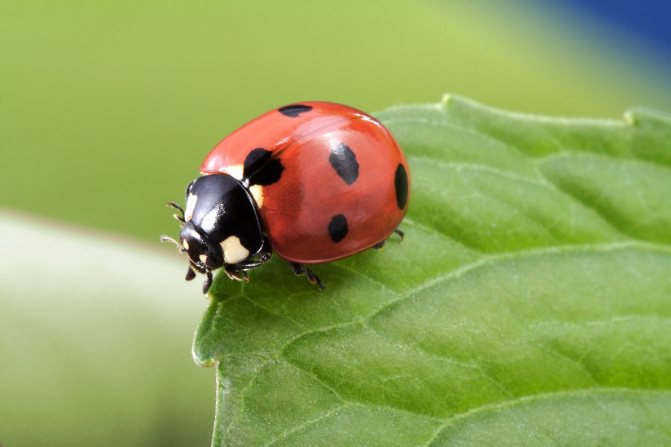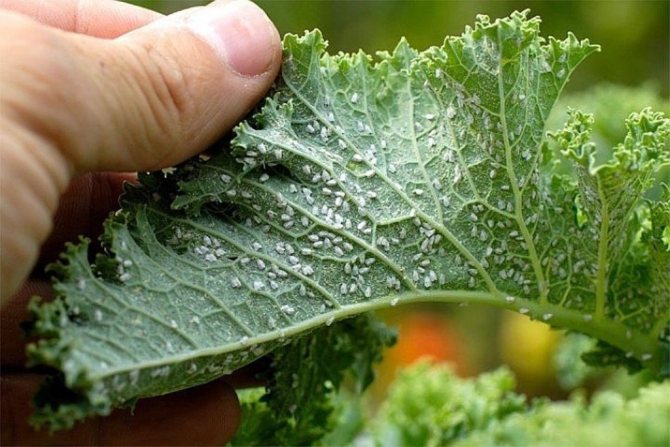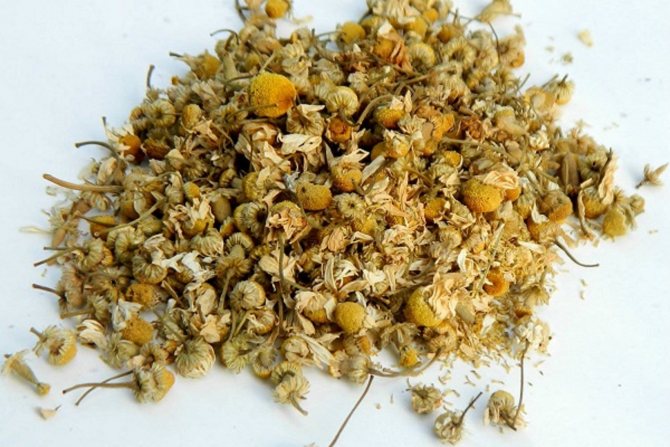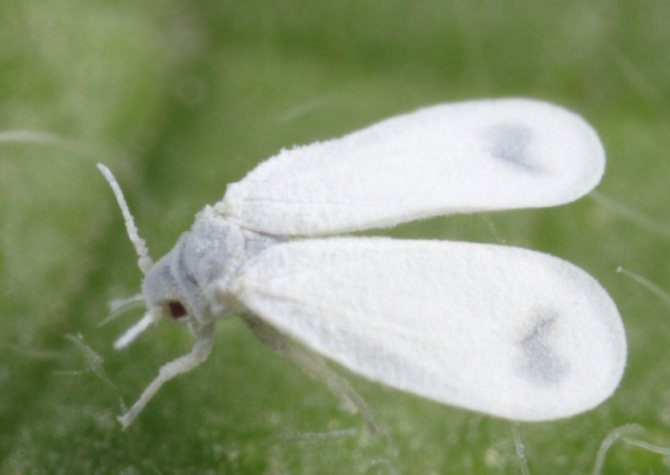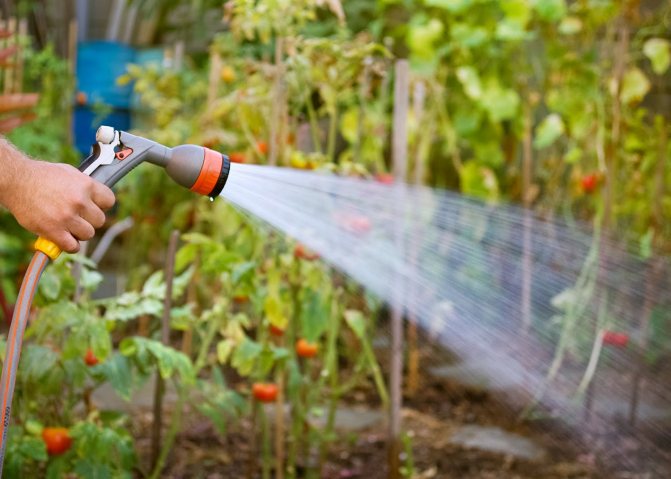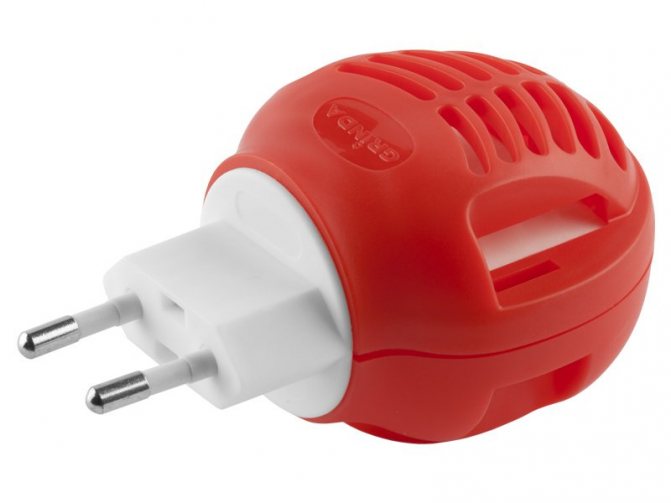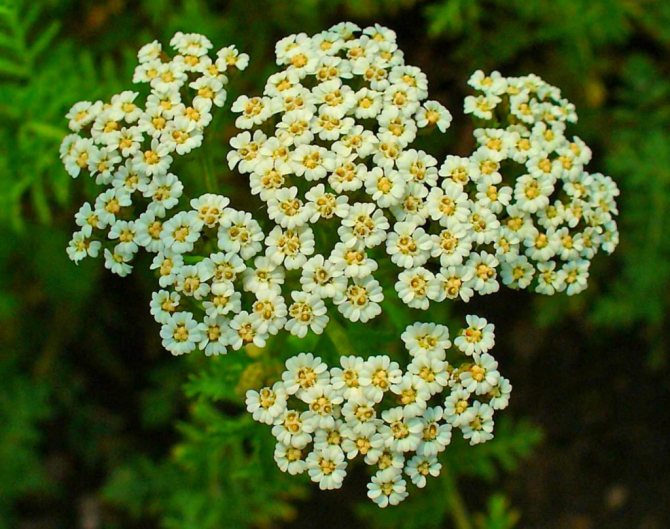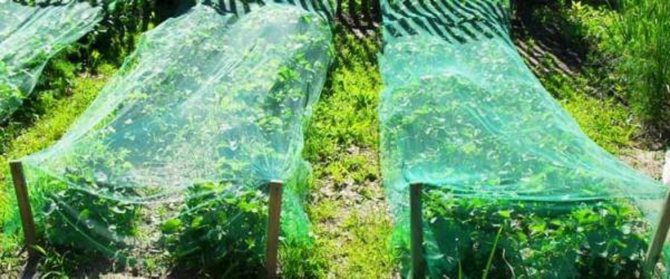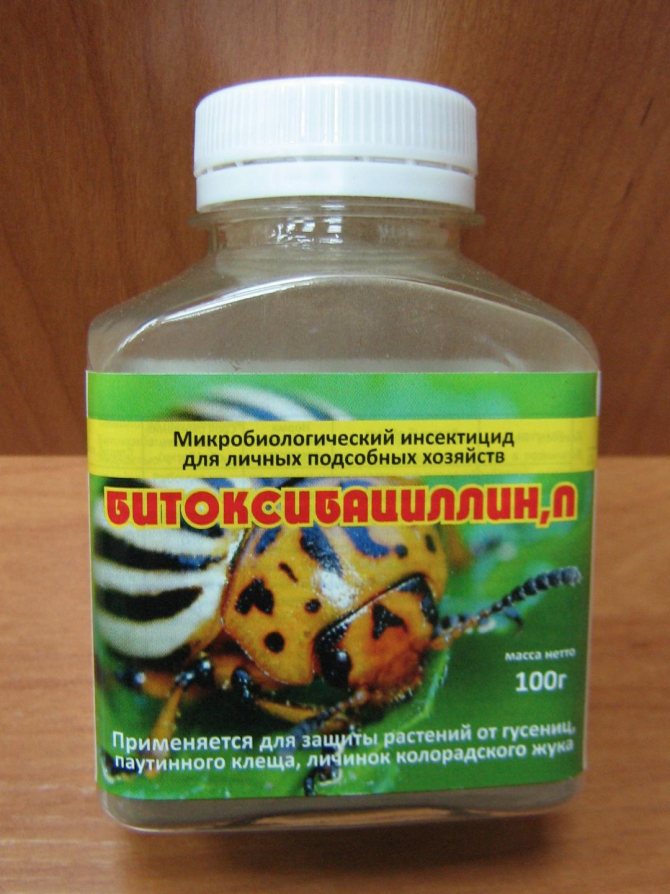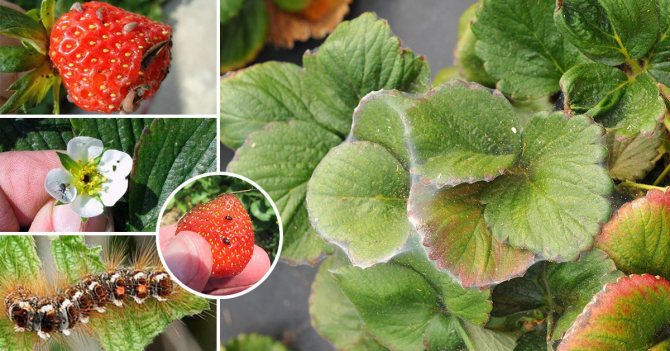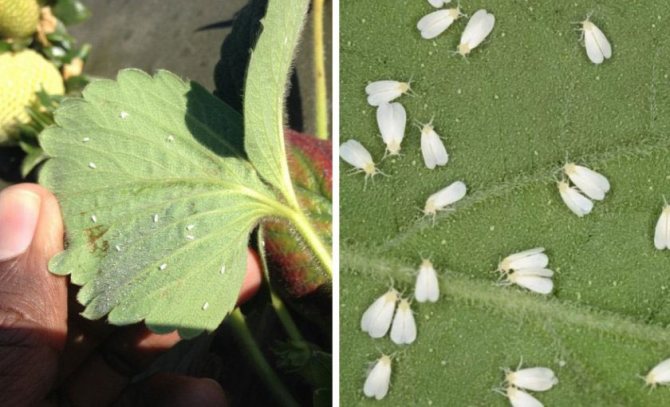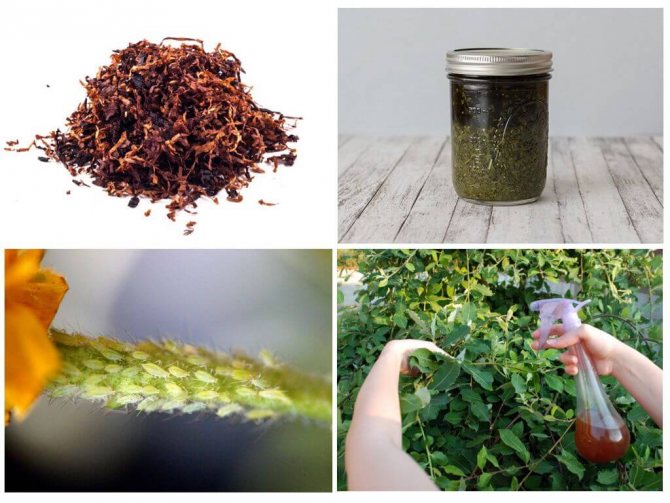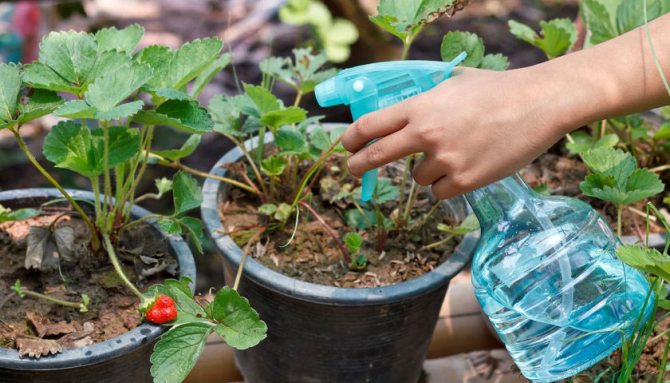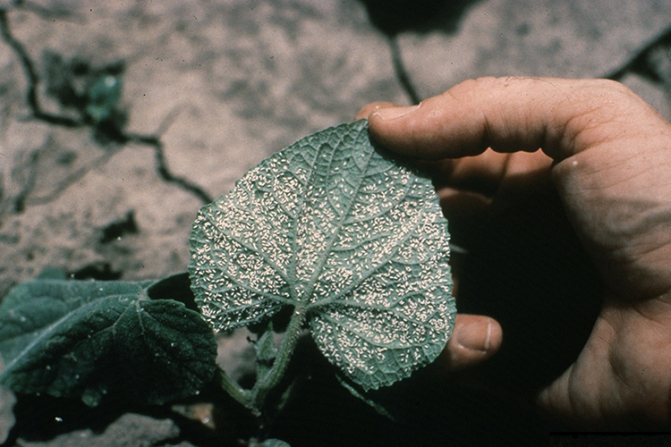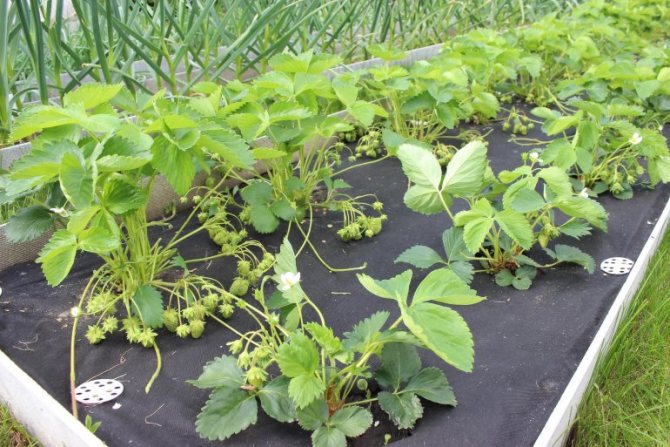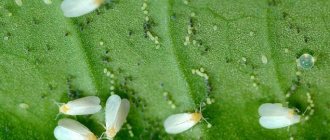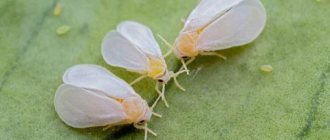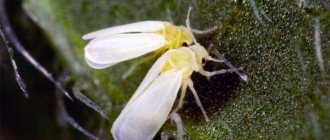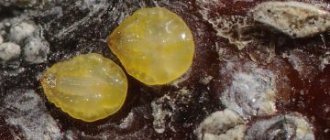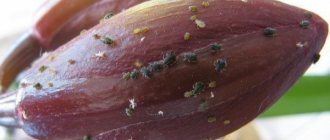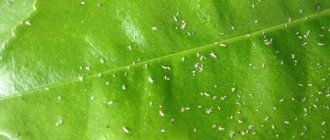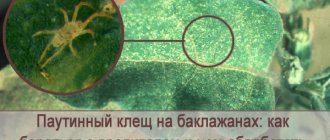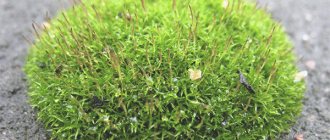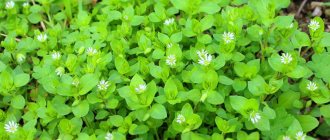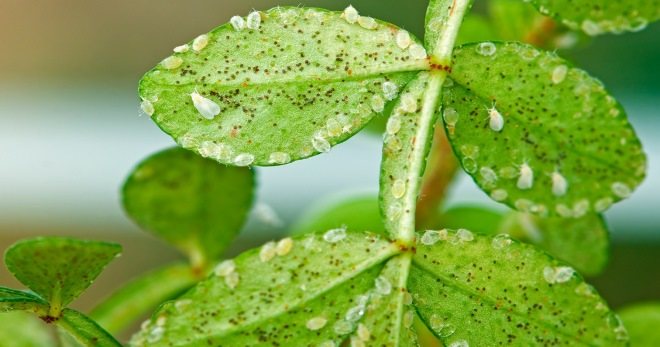
Sometimes summer residents are faced with such a problem as a whitefly in the open field, how to get rid of it as soon as possible is an important question, because when a lot of insects are bred, then in a few weeks they can ruin the entire crop. If you notice in time that the parasite has settled in the garden, then the plants can be saved.
Whitefly, pest portrait
Whiteflies, or aleurodids (lat.Aleyrodidae) are a family of small homoptera insects (Homoptera) from the suborder Sternorrhyncha (Hemiptera).
The family contains about 1550 species. The scientific name comes from the Greek word aleuron (flour) due to the powdery coating on the wings, and the Russian word comes from the presence of 2 pairs of white wings (from Wikipedia).
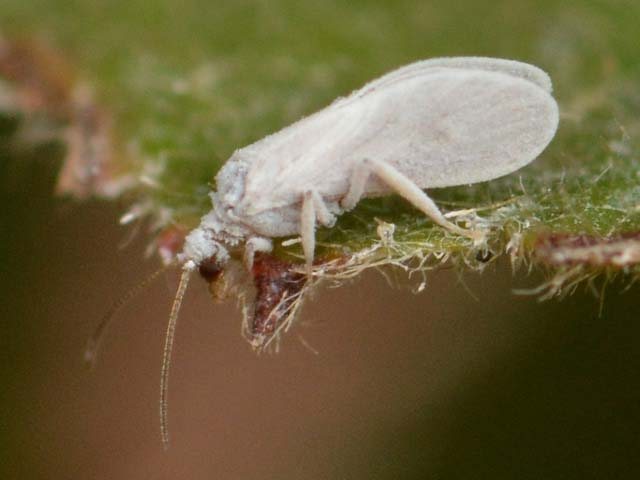

These insects can settle on absolutely all plants of the garden plot, and also love to settle in greenhouses. And this is no coincidence, because their homeland is South America, where it is always warm. And it is the greenhouse climate that is most comfortable for them.
If you take a closer look at them, then these are very small butterflies, no more than 2.5 mm in size. Therefore, finding their population is not easy. Moreover, they initially settle on the lower part of the leaves of plants.
And you can see them only by disturbing a bush, or a branch. In this case, they take off, wind around their shelter for a few seconds, and land back. Having chosen a "home" for themselves, they do not fly away from it, and swarm nearby.
The insect is very gluttonous and can destroy almost all plantings. They literally suck all the juices from the leaves. At the same time, the green cover darkens, curls, the plant becomes depressed and gradually dies.
The female butterfly is extremely fertile. She gives from 10 to 15 generations per season. And each individual is capable of laying from 130 to 290 eggs in one clutch. And imagine after 40 days, all young individuals are already capable of laying eggs by themselves.
And, although in cold weather its ability to reproduce decreases, it itself does not die, but waits out bad weather conditions in the upper layer of the soil, or under fallen leaves.
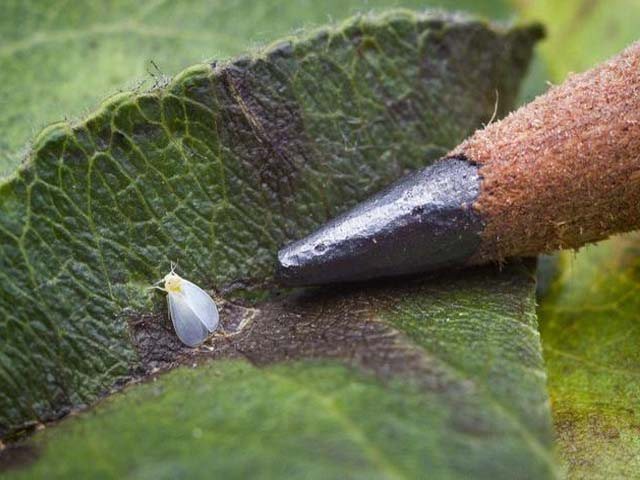

Outwardly, these pests resemble small moths, although they have nothing to do with them. 4 wings of these insects are covered with a powdery powdery coating. This can be seen especially well through a magnifying glass.
Whitefly larvae are pale yellow in color, very small in size - up to 0.8 mm. They live exclusively on the underside of the leaf.
The harmful effects of this insect are twofold.
On the one hand, pests directly eat plants, on the other hand, releasing a sweetish liquid on the surface of the leaf, they, thereby, lead to the appearance of a fungus. As a result, the leaves may turn black and curl. At the same time, the yield decreases sharply.
Among all plants, butterflies are most affected by tomatoes, cucumbers, lettuce, celery and some flower plants.
Therefore, at the first signs of its appearance, you should immediately start eliminating this pest. Although I must say that this is not an easy task. And it takes patience and time to deal with it.
The main reasons for the appearance
The most comfortable conditions for the normal life of the whitefly are warmth and high humidity. Another factor contributing to the rapid reproduction of pests is the lack of ventilation.Insects are attracted by densely planted plants, which give them an excellent opportunity to move to new areas for food.
Whitefly in the greenhouse prefers to eat the leaves of tomatoes, peppers, cucumbers, eggplants. And in open areas, the whitefly can settle on strawberries, potatoes, melons or fruit trees.
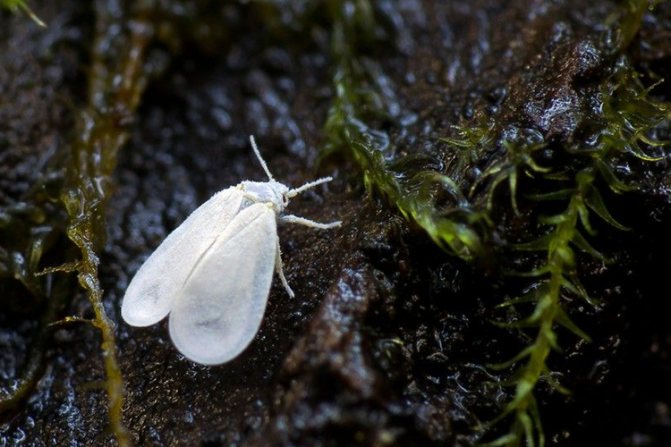

If we talk about indoor plants, then most often the parasite starts in an orchid, balsam, fuchsia, geranium, begonia, especially if the room is humid and is rarely ventilated.
Whitefly control methods in the garden
The ideal conditions for this insect are as follows - hot, long summers and fairly high air humidity.
However, if the temperature drops below 10 degrees, then its larvae stop growing, and the adults stop multiplying. But, the laid eggs tolerate these changes well and, for example, can be transferred from the ground to a greenhouse, where larvae will hatch from them later.
It is not easy to destroy this malicious pest, and a whole range of measures must be taken to combat it. But basically they can be divided into two categories.
- folk remedies
- chemicals
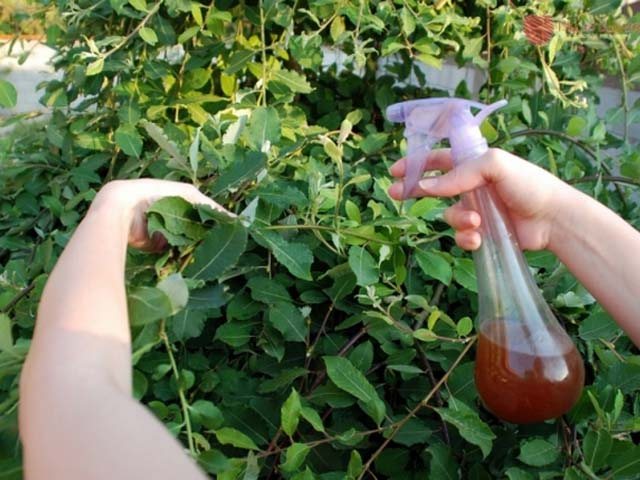

First of all, control measures can be based on the fact that the insect can be destroyed when it just "settles" on the plant. At this moment, it is just possible to intervene in the cycle of its development and destroy it, while the female has not yet had time to lay eggs.
What are these methods?
1. One of the most effective methods during this period is to wipe or spray the leaves of plants with soapy water. However, it is justified if you have a small number of them.
If there are a lot of green pets, then this process will be too laborious.
But still I will describe this option, it is applicable to many plants. What needs to be done?
Just once a week, wipe the leaves with a soft sponge dipped in soapy water. In this case, one should try not only to wet the surface with soapy water, but also to remove the larvae. You can also spray seedlings with a sprayer. This method is especially useful in greenhouses where the plants are quite densely planted.
The solution can be prepared in the following ways. Grate laundry soap in the form of shavings and dissolve in water in a ratio of 1: 6. Before applying it to the plant, beat the solution until foamy.
It will be necessary to spray not only the plants themselves, but also the soil around them in order to destroy the larvae deposited in it.
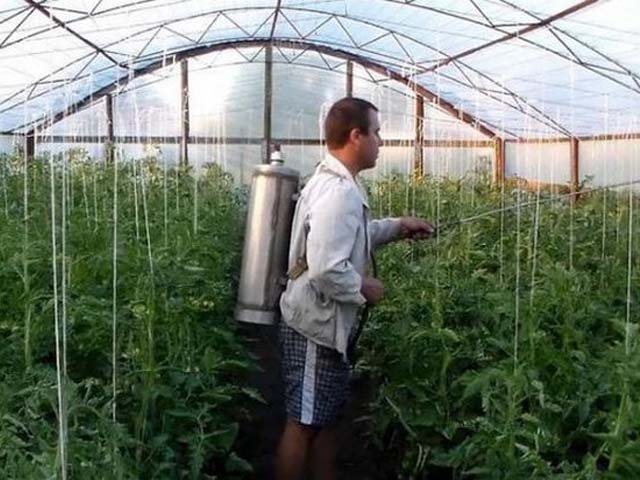

2. Among the folk methods, a method is also used in which an infusion of garlic is made. To do this, a couple of cloves of garlic (more can be) should be chopped smaller and filled with a liter of water. Put the jar in a dark place for infusion. After that, the seedlings should be treated once a week for two to three weeks.
3. Butterflies also dislike dandelion infusion. For its preparation, both roots and leaves are used. Both should be taken 40 grams each and chopped by slicing. Then pour all this with a liter of water. It will take a little longer to insist than garlic, namely 4 days.
After that, the solution is ready for use. They will need to spray the plants twice, with a break of one week.
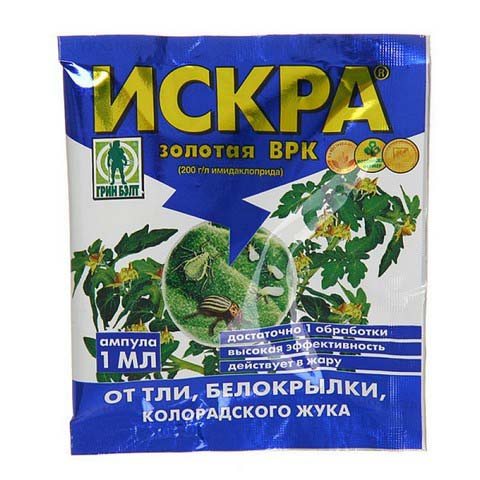

4. With regard to chemical methods of control, there are a lot of drugs. And they can always be purchased at the store.
One of these drugs is Iskra. It has a high efficiency of its impact. And therefore it is produced in the form of a powder and in the form of sticks, and it can also be purchased in ampoules that are diluted in a certain amount of water. according to instructions.
This remedy is especially so that it is used for watering.It penetrates the plant through the soil and acts on insects for 25 days. Eating the leaves of such plants, the butterfly dies.
However, be aware that when you use such drugs, that is, a certain period during which the fruits from the plant, its leaves and stems cannot be eaten. Therefore, read the instructions carefully!
Other similar means include fitoverm, akarin, zeta, alatar, etc.
And then we will look at how to deal with the pest on various plants in our garden.
Who can harm
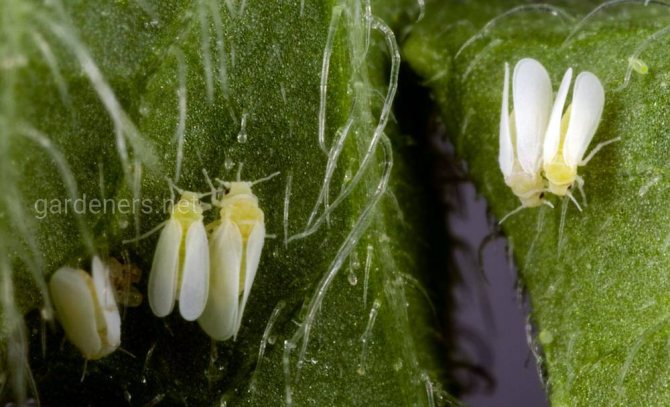

The main delicacy of the strawberry whitefly is the juice of berry crops. In particular, strawberries. In fact, the insect devastates the stems and leaves of the plant, ultimately leaving it without nutrients and minerals that allow it to grow and develop. But all would be fine, but in this story there is another significant disadvantage.
How to deal with a pest on strawberries and strawberries during fruiting
According to the plants on which this pest settles, it is usually called that. Strawberries and strawberries, for example, are parasitized by the strawberry whitefly.
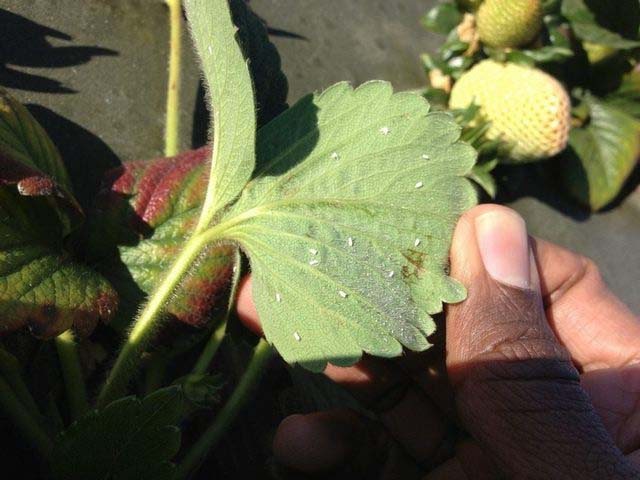

It's pretty easy to spot it on strawberries. It is enough to shake the bush a little and small white insects will immediately fly into the air. On the reverse side of the leaf, if you turn it over, you can find larvae, and the leaf itself will eventually become covered with a whitish bloom.
To combat the pest on strawberries, both folk and chemical agents are used. The most effective among chemicals are such as Aktara, Aktellik and Rovikurt.
Actellic is a liquid in ampoules that is applied four times per season. Rovikurt is an oily liquid and is used if the strawberry is already massively infected with whitefly.
But they cannot be used during the period when the harvest is in progress. Many chemicals have a decomposition time of 20 to 25 days.
In addition to chemicals, such a biological insecticide as "Verticillin" helps well.
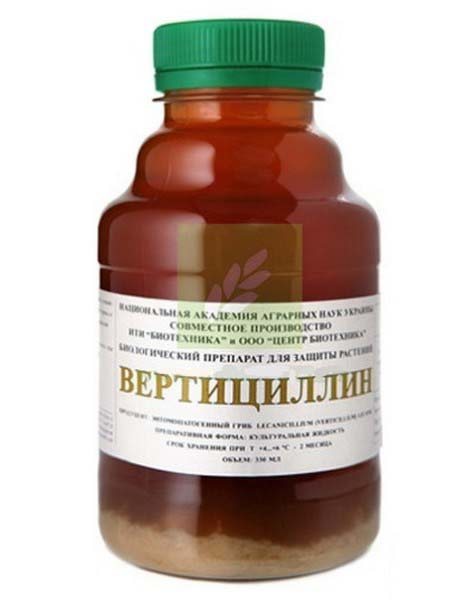

This is a fungus that, while multiplying, affects the insect and destroys it.
From folk remedies, sticky traps are suitable, which include sticky substances such as honey, petroleum jelly and castor oil. Since insects do not fly far from their bush, which they have substantiated, a lot of traps should be set.
And in order for them to quickly adhere to them, you just need to lightly shake the seedlings. In this case, the larvae will of course remain where they were laid, but the adults, having taken off, are most likely to fall for a trick.
The use of an infusion of garlic and a solution based on laundry soap, as described above, can also be effective.
Method of processing crops
The option for applying the drug will depend on the type of crop and its vegetative stage. Urgent measures against an insect should be taken if it is seen on seedlings, since enormous damage to the plantings can be caused if the whitefly begins to spread en masse in the garden. How to get rid of a pest on seedlings? The whole ground part of the plant should be treated with the prepared solution. The concentration can be increased if necessary, if the instruction does not prohibit it. But, as a rule, there is nothing to worry about, since the chemical component will decay by the time the ovary forms. It should be said that the insect inflicts quite tangible damage on flowers. If you do not plan to cut ornamental plants, then the use of insecticides is not limited. It must be remembered that flowers cut and brought into the house can cause infection and home crops.
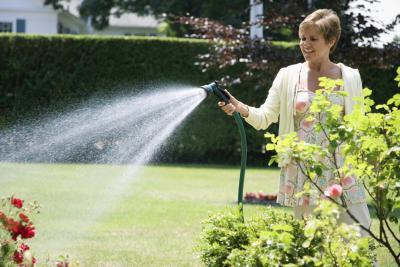

Folk remedies for fighting whitefly on cabbage
Cabbage is usually planted not so much and in large quantities, such as onions, dill, so washing the leaves with soapy water will come in handy.
It is necessary to wash the leaves on both sides.
You can get rid of the larvae by spraying the plants with special infusions. Garlic, yarrow or dandelion infusion help well. Having prepared them on any of these components (it is usually infused for 4 days), it is necessary to spray the cabbage once every three days.
We spray until the pest is completely gone.
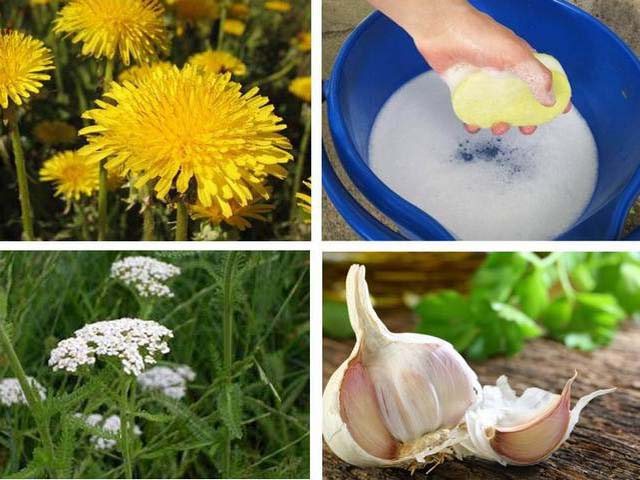

It's not hard to make your own and a sticky trap. To do this, take cardboard, cut it into small squares and paint it yellow.
It is believed that butterflies fly to this very color.
Then cover the cardboard with an adhesive such as honey, petroleum jelly, or some glue that takes a long time to dry. Place traps near the plants and disturb the family.
Another preparation that can be prepared is a bleach solution. To do this, take 0.5 kg of lime and dilute it in 12 liters of water. Insist 5 hours. Then carry out the processing of the cabbage.
This method is better suited for greenhouse cabbage, but you can also treat plants in the open field with it.
How to get rid of a pest on onions
Onions are one of the traditional and common garden plants. Like other plants, it is also susceptible to attack by pests.
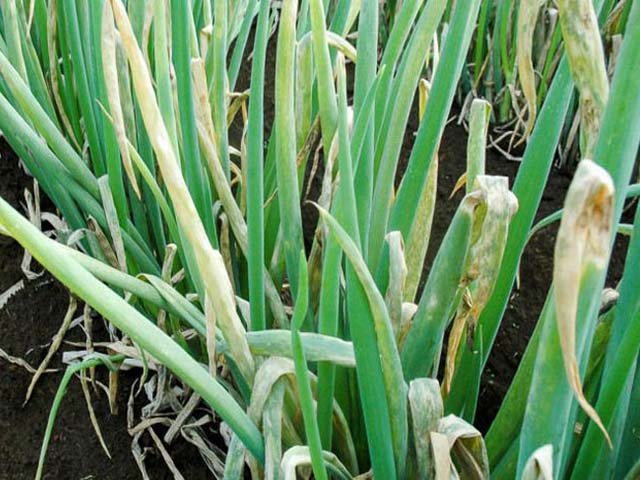

All the methods described earlier are also good for killing harmful insects on onions. In addition, you can also prepare a citrus infusion.
To do this, you need dry orange and lemon peels. Zest in the amount of 50 g is poured with a liter of water. It is insisted for two days. And after this period, two tablespoons of the solution with laundry soap are added to the solution. Plantings are processed within five days by simple spraying.
And, of course, do not forget about the use of various chemicals.
This method is good when there are a lot of pests. In this case, only drastic measures will help, aimed not at scaring away, but at destroying insects. When using chemicals, it is recommended to add a little soap solution or shampoos to them so that the substance adheres better to the treated plants.
Preventive actions
As experienced gardeners say, the appearance of a pest can be prevented. In late autumn, it is recommended to dig up the area, destroying the weeds and removing all the tops. The compost heap should not be placed directly on the site. This is due to the fact that it will be a very attractive wintering place for whiteflies and other pests.
As a rule, insects appear where high humidity is combined with high temperatures, where there is insufficient ventilation, and plants are placed very close to each other. That is why, first of all, the plantings need to provide optimal conditions. As a preventive measure, you can also use drugs that strengthen plants.
How to get rid of a whitefly in a greenhouse (greenhouse)
The butterfly that hosts greenhouses and greenhouses belongs to the type of greenhouse.
A favorable climate has been created for her, and therefore, if she has already settled there, it will not be easy for the crane to get rid of it. In any case, any one method will not be sufficient. A whole range of measures must be followed.
Let's consider these measures.
And the first of them is not to introduce the pest along with the planting material.
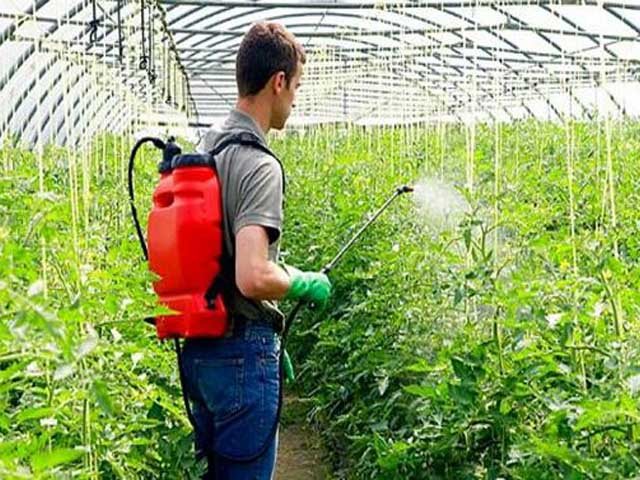

The second is preventive measures.
- remove all plant residues from the greenhouse without leaving them for the winter. Insects hibernate well under leaves and branches.
- if the greenhouse is already infected, then in the spring a layer of soil of 5 - 7 cm should be removed.
- in spring and autumn, treat the walls, transoms and doors of greenhouses with infusions of garlic, dandelion, or chemicals
- fumigation with a sulfur stick in autumn and spring
If the greenhouse or greenhouse is already infected, then it is necessary to detect the parasite in time and take action.
Upon detection, it is necessary:
- remove larvae from leaves
- treat with insecticides
- process plants with various folk remedies
- set traps
- colonize insect enemies in greenhouses, such as ladybugs or lacewings
At present, in industrial greenhouses, their enemy insects are used to control butterflies - beetles that lay their eggs in the body of a whitefly, ticks, lacewing, ladybugs. They are simply settled there, and they fight butterflies in a natural way.
Not all of them have the opportunity to settle in their greenhouses, but ladybugs themselves will settle if you sow dill there.
Since tomatoes and cucumbers are most often grown in greenhouses, we will consider what measures can be taken to preserve them.
Where is found
The natural habitat of Alerodida strawberry is forests, parks, squares and home gardens located in the forest-steppe zone of that part of the former Soviet Union, which is considered and is now European. The whitefly loves shade, therefore, theoretically, it can settle almost everywhere in the designated area. Scientists identify three foci of the total spread of the pest:
- Lviv region (Ukraine);
- Kiev region (Ukraine);
- Moscow region (Russia).
Pest control methods on tomatoes
You are always upset when you see a pest on your plants, which you have been taking care of since spring. And including tomatoes. Although the butterfly settles on them and not the table often, as in other cultures, cases are still present.
Symptoms of small white insects settling on plants are yellowed and twisted leaves. As a result, the shoots begin to weaken and wither. In addition, the larvae secrete mucus, which causes a sooty fungus to appear. You can see and recognize it by the black bloom on the back of the sheet.
To remove both larvae and plaque, a soap solution is used, in which a sponge or cotton swab is moistened. All leaves are wiped with the simultaneous removal of larvae. But the processing doesn't end there.
Further, it is necessary to apply some chemical agents, such as Fitoverm, Tsitkor, Fosbecid, Confidor, etc.
The temperature lowering method can be applied. It is known that adults and larvae die at temperatures below 10 degrees. However, this does not apply to their eggs.
Chemistry is best used in case of mass accumulation of the pest. If you find a small amount of whitefly, then you can cope with one soap solution.
In this case, the use of traps and sticky tapes can also help. You can either buy them in the store or make them yourself. To do this, you just need to cut squares out of cardboard, paint them yellow, or glue colored paper of the desired color. Then fill it with any sticky substance (honey, petroleum jelly, glue that dries for a long time will do).
Hang in large quantities in the greenhouse and shake the branches of the plants slightly.
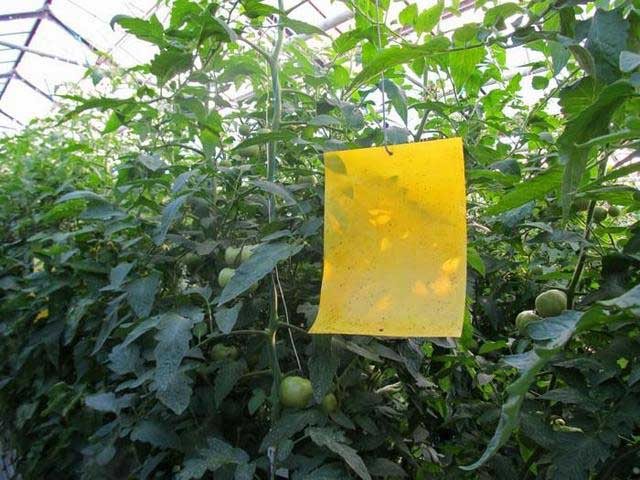

You can also use fumigators with liquids, or just plates. Or, set the spiral on fire and let it rise for a while.
From folk remedies, this is again a soap solution, or an infusion of dandelions, or garlic.
In addition, wood ash can be used. 5 liters of warm water is poured onto a glass of ash and infused for 4 hours. Next, 50 g of laundry soap is rubbed into the product. After that, it is filtered and sprayed in the greenhouse for three days.
You can also use ammonia. 35 ml of alcohol is dissolved in a bucket of water. Plants are processed every three days until all pests are destroyed.
How to get rid of whitefly on cucumbers during fruiting
Signs of the appearance of a white grandma on cucumbers are:
- curling or curling of leaves
- deformation of shoots and leaves
- the appearance of spots of yellow or brown color
- larvae on the underside of the leaf
- swarming (years) of adults over plants
The fight against a pest is reduced, first of all, to a change in its life cycle. That is, to put it simply, you need to prevent adult females from laying eggs, and the larvae to grow.
For this purpose, regular ventilation of the greenhouse helps to reduce the temperature in it.
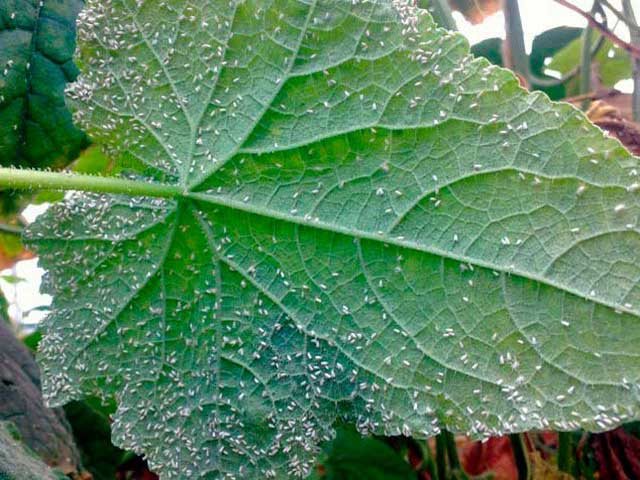

Sticky traps are used to catch insects; they were described in the section on tomatoes. But you can also make a light trap. For this, a box is taken, a yellow light bulb is attached inside. A container with water is placed under it. Insects fly into the light and fall into the water.
Folk methods that can be used in a greenhouse with cucumbers are the same as for other plants: garlic, dandelion infusions, etc.
There are good biological control measures that involve attracting predatory insects. For example, ladybugs. We already wrote about this above.
If we are fighting a butterfly during the fruiting period of cucumbers, then it is clear that chemical protection cannot be used. And you can use all folk remedies equally.
After harvesting, be sure to remove all planting material from the greenhouse, and treat the space with a sulfur checker.
Traps
Many summer residents are interested in whether an insect such as a whitefly can be eliminated without chemicals. Folk methods of struggle, I must say, are very common among experienced gardeners. Here's what summer residents advise: to catch adults, you can use glue traps. They are pieces of hardboard or plywood, painted white or yellow. After drying, the surfaces are lubricated with castor oil, honey with rosin or petroleum jelly. Pests are attracted by a bright color (preferably yellow), they sit on the bait and just stick. After a lot of insects have accumulated on the plywood, it is wiped and soaked again. Glue traps designed for flies are also effective.
Video on how to get rid of a whitefly in a greenhouse
In greenhouses, we usually grow cucumbers, peppers, tomatoes, eggplants. We begin to sow all these plants in early spring and take care of them on our windowsills until they are planted in open ground.
We water, give them additional light, feed them, warm them up, temper them ...
And it's a pity when you can't keep track of it, and in just a few days, the insidious pest literally devours individual leaves. A living flowering plant a few days ago becomes lifeless and miserable.
How to protect your plants from this scourge, and if you have not saved your seedlings from it, then this video will tell you how to deal with the enemy.
We have already covered some of the above in the article, but you can learn something new by watching the video material.
Dear friends, I hope that today's article was useful to you. And now you are not giving up in the face of a pest. You can always give him a reliable rebuff.
The main thing is not to give up, and not to be lazy. And then no pest will encroach on your crop, which you grow with such love.
And I wish you success in this.
Great harvests for everyone and the pleasure of working in the garden, in the garden!
Author of the publication
offline 1 year


